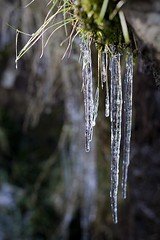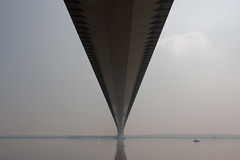- This topic has 132 replies, 20 voices, and was last updated 12 years ago by molgrips.
-
Dummies guide to DSLR photography…
-
becky_kirk43Free MemberPosted 12 years ago
Seems to be many people on here at the moment (myself included) who have recently indulged in a new shiny camera to play with (perhaps inspired by some of the amazing pictures people put up on here) but I would guess don’t really know that much about it all!
I know that much of this could be found by reading the magazines and searching through the net- but thought it’d be nice to get lots of advice in one place, from the fountain of knowledge that is singletrack world! (after all, its a bit like mountain biking – can have all the gear but have no idea 😛 )
So I’m throwing out the question…what do we need to know? (how do we work out what a lens is good for? what do some of the settings and adjustments do? some photography terms? basically anything that you think my be useful to someone starting out!)
grumFree MemberPosted 12 years agoHave a look here:
http://www.talkphotography.co.uk/forums/forumdisplay.php?f=62
IMO the main thing to learn is the relationship between Aperture, Shutter Speed and ISO, and what effect they have on photographs.
Try this one – http://www.talkphotography.co.uk/forums/showthread.php?t=158332 or maybe this one – http://www.talkphotography.co.uk/forums/showthread.php?t=154225
CharlieMungusFree MemberPosted 12 years agoThe Scott Kelby series of books is really good for what you want to know. if you buy all 3 then you can move forwards and back quite easily. He avoids too much of the technical stuff and just tels you how to take good pics
molgripsFree MemberPosted 12 years agoWell, that’s like saying ‘dummies’ guide to cycling’.
If you want the basics of aperture, shutter speed, depth of field, ISO and all that, then you really need a book or at least wikipedia. It’d take hours to type it all out here! Not wishing to be mean but it really is textbook material.
You could try a night class or a weekend course or something – many are very good I’m told.
CharlieMungusFree MemberPosted 12 years agothen you really need a book or at least wikipedia
wikipedia? What is that? Could you explain the basics of it, how it works and if it might be useful?
Ta
grumFree MemberPosted 12 years agoIf you want the basics of aperture, shutter speed, depth of field, ISO and all that, then you really need a book or at least wikipedia.
Or just read the links I posted above maybe? 🙂
becky_kirk43Free MemberPosted 12 years agoHave a look here:
http://www.talkphotography.co.uk/forums/forumdisplay.php?f=62
Cheers Grum – might keep my occupied for a while! 😛 And its free advice!
lodiousFree MemberPosted 12 years agoI’ve got some .pdf’s on composition (i’ve not looked at them yet, but apparently quite good), I’ll PM them to you Becky.
billysuggerFree MemberPosted 12 years agoDidn’t really rate Scott Kelby’s books.
I kept expecting to turn the page saying ‘Don’t forget to turn it on and take the lens cap off dudes’
In the books I was given I’m quite sure he dedicates a few pages to ‘Which tripod’ only to end up saying buy what you can afford.
There’s a lot in there about photographing weddings too (yawn) and only take landscape photos at sunrise/set, everything else is just amature crap. I’ll sell you my copies if you like
Just my two p. Not technical enough for my liking. It’s hard to find a book that will explain the relationship between aperture, shutter speed, ISO, etc without reading like a chemistry textbook.
It’s a very, very technical hobby. Unless you buy a Canon and put it on full auto
molgripsFree MemberPosted 12 years agoYour camera has a sensor that records a picture. How sensitive you set it (ISO) determines how much light it needs. You can let more or less light onto it by changing the size of the hole (aperture) or how long the light is falling on it (shutter speed). Those three things determine your ‘exposure’ or how dark or light the picture is. Measuring how much light you need is called ‘metering’. You can fix one or more of these three things and the camera will adjust the ones you haven’t fixed to make it look reasonable. Fixing a fast shutter speed (calle shutter priority and marked S on your dial) means your subject won’t have moved much whilst you are exposing the image, and it won’t be blurred (ideal for fast moving stuff). Fixing a particular aperture (called aperture priority and marked A on your dial) determines how far behind or infront of your subject things will still be in focus. There is a general setting called Program (marked as P) which guesses reasonable values for aperture and shutter. You should use as low an ISO as possible whilst keeping the other two numbers the way you want, cos high ISO gives worse image quality. You can use any of P, S or A and also make the overall image lighter or darker with a dial, this is called exposure compensation and is usually marked +/-. Exposure is measured in EV, commonly called ‘stops’. 1EV difference in shutter speed is a doubling or halving of the actual time. In aperture terms 1EV is called an F-stop but it has a funny scale like f1.4, f1.8, f2.0, f2.8, f3.6 and so on – larger numbers are smaller holes and hence let in less light – half as much each f-stop. In ISO terms 1EV is a doubling or halving of sensitivity which is expressed in ISO numbers – typical is ISO100 or ISO200 and cameras usually go up to ISO6400 these days. So halve the shutter speed and you need to correspondingly go to a smaller aperture OR a lower ISO to get the image exposed the same.
There. That help?
CougarFull MemberPosted 12 years agoOr just read the links I posted above maybe?
“You are not logged in or you do not have permission to access this page.”
McHamishFree MemberPosted 12 years agoIf you want to buy one book get this New Manual of Photography
I think it was first published in the 80’s, if you can find an old copy in a charity shop it will still be of value – the concepts are the same between film and digital.
IMO many ‘digital photography’ books waste the first 30% telling you about computers.
Tom Ang books are also good for the beginner.
If you want to get into more advanced concepts try anything by Michael Freeman.
5thElefantFree MemberPosted 12 years agoIt’s hard to find a book that will explain the relationship between aperture, shutter speed, ISO
How?
The aperture is the hole that lets light in. The shutter speed determines how long light is let in for. ISO is how much the camera amplifies the total light it receives.
That is all there is to the relationship.
CougarFull MemberPosted 12 years agoMeasuring how much light you need is called ‘metering’.
Metering is what threw me for far too long.
The abridged version is, unless you specifically tell it otherwise, the camera is “clever”(*) and will try to take the best picture it can with the information it has available. This information is a combination of settings you’ve dialed in and what it’s worked out for itself from looking out through the lens.
When you set, for example, the aperture, it’ll juggle the other settings to take what it thinks is a reasonable picture. Swapping between the different semi-manual modes (what Canon calls the “creative zone”) changes which bits you have direct control over and which bits you’re leaving to the camera. This is useful as different parameters are more or less important depending on what you’re shooting.
(* – technical term)
olympusFree MemberPosted 12 years agoWow, thats a broad question(s)
Some key things to learn are:
Aperture and Shutter speed. these two values are intertwined with eachother and dictate just about everything to do with a photograph.Shutter speed is easy, its just how long the shutter opens for to reveal the sensor to the outside world. So fast shutter speed (1/1000) lets in little light and freezes motion. A long shutter speed (1″ or above) lets in a lot of light and blurs motion. You can control shutter speed using S or Tv setting on your camera.
Aperture is a bit more complex. The aperture is the size of the hole in the lens that lets in light. Its measured in f stops and goes from small f numbers (large holes) down to high f numbers (small holes). So f1.8 is a large aperture, large hole, that lets in a lot of light, but it gives you a narrow focus plane (depth of field). f22 is a tiny aperture, small hole, and it lets in less light but it gives you more depth of field.
So you can see that a large aperture acts like a slow shutter speed in terms of light getting in, and a small aperture act like a fast shutter speed. So they must work in harmony, large aperture with fast shutter speeds, or small aperture with long shutter speeds.
My best advice is to think of a correctly exposed photograph as a full bucket of water. Water being like light.
You have a pipe and a tap. The pipe is the aperture and the tap is the shutter speed.
To fill the bucket with a large pipe (large aperture f2.8) you need only to turn the tap on and off quickly (fast shutter speed).
To fill the bucket using a small pipe (f22 small aperture) you must have the tap turned for longer to fill the bucket to the same level.
Landscape photographers want as much focus as possible so we use apertures such as f22, but that means the shutter speeds can often be long, so we use tripods to keep everything steady. To a novice its easy to wonder why theyre always carrying tripods around when it isnt dark!
If you shoot free hand then my sugestion would be to ensure that your shutter speed is nver slower than 1 divided by your focal length. So if you shooting at 50mm you slowest shutter speed should be 1/50th of a second. At 300mm it would be 1/300th of a second or faster. Wide angles gather more light so they can use longer speeds. This will ensure your pictures arent blurred.
I’d say these tips would be the most important for getting you started. I’ll add more when I remember them!! 😀
Oh and play around with metering in auto and see what happens. Point your camera at a light bulb so it fills 30% of the middle of your frame. Take a photo with the metering mode as matrix or evaluative, look at the picture. Now take the same photo using spot metering and see what happens. By adjusting the metering you’re telling the camera what part of the photograph you want to be correctly exposed. So for portraits you should use spot metering on their face and not worry about the backgrounds.
molgripsFree MemberPosted 12 years agoIf you shoot free hand then my sugestion would be to ensure that your shutter speed is nver slower than 1 divided by your focal length
Your focal length being how ‘zoomed in’ you are.
Small focal length numbers eg 20mm lens means a very wide field of view. So you can get lots of stuff in the picture but it’s all small.
Big focal length number eg 300mm means you are zoomed in a lot. Things look big but obviously you can’t get as much in the frame.
When people talk about a 50mm lens that is what they mean. On your camera about 35mm is basically not zoomed in or out – things look about the same size through the camera as with the naked eye. Lower than that = wide angle, higher = zoom in or telephoto. Cameras often come with general purpose lenses known as ‘kit’ lenses, you probably have 18-55mm.
By adjusting the metering you’re telling the camera what part of the photograph you want to be correctly exposed
Yes. By default your camera on any of the auto modes looks at the whole picture and decides how much light it wants during metering. However you might be more interested in a certain part of it (ie a person’s face) so you can use what’s called ‘spot metering’ which only worries about the middle of the picture. So if a person is standing in shade in front of a sunny landscape, and you meter on their face, you will see their face fine but the landscape will be washed out.
Almost all cameras allow you to meter pointing at something, then move the camera to change the shot, and then take the picture. You do the initial metering by half-pressing the button. So say you want a person’s face exposed correctly but you don’t want it in the middle of the picture, you select spot metering (or a similar setting), aim at their face, half-press the button, keep it half pressed then move the camera, and push it home. As long as you keep the button half pressed it’ll keep the same settings.
McHamishFree MemberPosted 12 years agoIt’s hard to find a book that will explain the relationship between aperture, shutter speed, ISO
An good analogy would be filling a glass of water…
If you open the tap slightly (aperture) only a little water is let through, this means that you need to keep it open for longer (shutter speed) to fill the glass. The wider you open the tap, the quicker the glass with fill i.e. the less time you’ll need to run the tap for.
ISO affect the sensitivity of the sensor (or film) so the higher the ISO setting the less light it would need to record the image. Not entirely sure how to apply that to the glass of water analogy…maybe smaller glasses.
Increasing the ISO setting means you’re more susceptible to noise (digital) or grain (film)…you could use this to your benefit in black and white images for example.
McHamishFree MemberPosted 12 years agoah I see Olympus beat me to it…although he uses a bucket in his analogy.
AlexSimonFull MemberPosted 12 years agoI’ll throw in a couple of composition tips that I always try and remind myself of.
1) Fill the frame – For example, with a portrait make sure the person is large in the frame. Even if it means cutting the tops of people’s heads off. The emotion is in the eyes/face, not the top of the head.
Staring competition by tryingtimes, on Flickr2) Avoid distractions in the image. Keep an eye on the background to see if there are any ways to recompose to avoid distractions – things like posts coming behind someone’s head.
Icicles 1 by tryingtimes, on FlickrThis is where Depth of Field can be vital. A bird in a tree is often going to be surrounded by detail, so photographers reduce the in-focus portions of the image so that the background becomes blurred and distracting hard edges are removed.
Nature’s Lollipop by tryingtimes, on FlickrSame for lots of subjects. For example panning with a mountain biker, so that the background has motion blur conveys the sense of speed but also isolates the rider from the background.
fast by tryingtimes, on Flickr3) Don’t put everything in the centre. If someone is looking in a particular direction, or moving in a direction, showing slightly where they are looking or moving towards will balance the image nicely. Look up the “rule of thirds” for further reading.
Do I have to by tryingtimes, on FlickrAn exception to this is when there is symmetry in the image, then centering makes sense.
Humber Bridge by tryingtimes, on FlickrgrumFree MemberPosted 12 years ago“You are not logged in or you do not have permission to access this page.”
I’ll leave you to work out how you might be able to get around that problem, Sherlock. 🙂
olympusFree MemberPosted 12 years agomolgrips cheers for filling in some of my blanks, its rather hard to cover even a small amount of stuff comprehensively when someone asks isnt it?
McHamish yeah your right, I’d say as you up the ISO the glass gets smaller.
CougarFull MemberPosted 12 years agoDepth of Field gets mentioned a lot.
A large depth of field is where most of the picture, foreground and background, is in sharp focus (eg, landscape shots).
A shallow DoF is when you’ve got the subject in focus and the background blurred for artistic effect or to avoid diverting interest from the subject (eg, portraits, ‘macro’ shots of small objects like insects or flowers).
As Olympus says, a large aperture (small F-number) gives a shallow depth of field.
Lenses are rated by their largest aperture size; my camera came with an 18-55mm f3.5-5.6 lens, which has a largest aperture of between 3.5 and 5.6 depending on which end of the zoom I’m at. That’s a decidedly average aperture.
On my shopping list is a 50mm f1.8 lens (what’s called a ‘prime’ because it’s fixed rather than zoom); why would I want another 50mm lens when I already have an 18-55mm zoom lens? Because the larger aperture allows me to take pictures with a much shallower DoF, so it makes (for instance) a fantastic lens for taking portraits. This larger aperture lens is known as a “faster” lens than the 18-55 (wider aperture = shorter exposure time for a given shot).
molgripsFree MemberPosted 12 years agoI started off with the intention of typing a super condensed summary for comedy effect, then I got a bit carried away 🙂
Because the larger aperture allows me to take pictures with a much shallower DoF
Not only that – it also allows more light in. If there’s not enough light (ie in a dark pub say) you can only let the shutter open for so long (people move about, your hands are not rock steady etc), usually about 1/30s or so; you can only set the ISO so high because your pictures look all speckled; so you need as large an aperture as possible.
With the kit lens you probably need a flash indoors in the evening. With a lens that can do f1.8 or f1.4 you probably won’t. Flashes are hard to work with because they are so bright and the light comes from the camera so you get loads of harsh shadows, and that lovely softly lit scene you are experiencing ends up looking like the freezer section in Tesco.
Lenses with big apertures can be cheap if they don’t zoom in and out – less space is taken up with mechanical gubbins so there’s more room for light to come in. You can get zoom lenses (ie variable ones) with large apertures but they are expensive. Long zoom lenses (ie those that magnify a lot) with wide apertures are extreeeeemly expensive, and have to be very large. That’s what you see photographers using on the side of the pitch at football matches. They need a lot of light so they can use fast shutter speeds and freeze the motion, and they have to zoom in a lot because they can’t run about on the pitch near the players 🙂
5thElefantFree MemberPosted 12 years agoDepth of field calculator / tables
I refer to the above a lot.
Have a read about hyperfocal distance as well.
CougarFull MemberPosted 12 years agoI’ll leave you to work out how you might be able to get around that problem, Sherlock.
Hush. (-:
treaclespongeFree MemberPosted 12 years agoBest bet is to have a read on the web, get out there, click buttons and twist knobs (fnar) and see what effect they have on the photos and then it will eventually click in your head. If you know the very basics of ISO, aperture, focal length etc then applying it to a scene becomes easy with time and practice. You will take LOTS of duffers for a while and only a few good ones, but Im happy if I get back from a day of snapping with 10% good pics.
AlexSimonFull MemberPosted 12 years agoMy taps that came with the house, would take ages to fill a bucket.
I had to use a pressure hose to fill buckets, which is inconvenient and not as neat as using taps.I had to upgrade to a new, more expensive, faster tap to get enough water out.
Before long I realised that I never used the other taps, so I had to upgrade all my taps to fast ones.Now I need a new bucket.
grumFree MemberPosted 12 years agoAlso, take loads and loads of pictures – using all the different modes, different apertures, shutter speeds etc – use an editing program on the computer that will let you see the exif info (which records all this stuff) so you can see what effect it’s having properly.
McHamishFree MemberPosted 12 years agoI think we’ve scared off the OP…
Maybe you’re right…we got a little too helpful then, at what point did it get creepy.
Maybe someone should indulge in some bigotry in the thread then we’ll attract the STW big guns to the thread for a good argument.
becky_kirk43Free MemberPosted 12 years agoI think we’ve scared off the OP…
I’m still here 😛 was taking pictures of the same thing, from the same place, varying the aperture to see if I noticed a difference in DoF…I don’t (but I suspect I’m either too close to it or doing something wrong!)
I’m pleasantly surprised by the helpfulness of all this (I’m not complaining but was expecting the usual sarcasm and a lot less sensible stuff!), but that does mean there is an awful lot to read through now!
meehajaFree MemberPosted 12 years agobuy a dummies guide to your camera, it’ll tell you all of the above, plus what the buttons on your actual camera do, and why you’d want to do that. Then get a project book “101 DSLR projects” or whatever, do the projects, learn stuff and enjoy it. Ignore the bitter cynics above.
McHamishFree MemberPosted 12 years agobut that does mean there is an awful lot to read through now!
There will be an exam.
5thElefantFree MemberPosted 12 years ago(but I suspect I’m either too close to it or doing something wrong!
Closer the better. Try 3′ away, wide open (f3.5 or whatever) and then fully closed (f22 or whatever). Make sure there’s stuff in the background that you can see if it’s in focus. If you’re reviewing on the camera try zooming in to see clearly or upload to your PC.
The topic ‘Dummies guide to DSLR photography…’ is closed to new replies.







